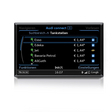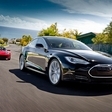|
Send this page to a friend! Fill in the form bellow | ||
Safety and Technology
Japanese Automakers in US Ready for Stiffer Emissions Standards
By 2016, Automakers in US must have 34.1mpg average
The United States is rapidly moving toward a more European model in terms of emissions standards. The Environmental Protection Agency has just awarded its first pay out of CO2 emissions credits based on automakers last three years of emissions. Automakers in the US receive CO2 credits for each metric ton of CO2 that they are better than CAFE standards.
The Japanese automakers have the most to gain from the tightening American fuel economy standards and have received 60% of the credits. Toyota ToyotaJapan, 1937 > present155 models
ToyotaJapan, 1937 > present155 models
4570 photos
10 videos
has an excess of 86 million credits. Honda HondaJapan, 1948 > present102 models
HondaJapan, 1948 > present102 models
2419 photos
10 videos
is a distant second with 36 million credits, and GM GMUnited States of America, 1998 > present8 models
GMUnited States of America, 1998 > present8 models
240 photos
has 25 million credits.
"We feel we've earned these credits, just like we've earned them in the long-standing fuel economy program," said Tom Stricker, Toyota's head of future powertrain development.
President Obama and his administration has been key to strengthening the Corporate Average Fuel Economy standards. In 2016, automakers must have an average fleet fuel economy of 34.1mpg (6.9l/100km), and the standard will increase to 54.5mpg (4.3l/100km) fleet average by 2025, if current plans stay in place.
Automakers are free to sell CO2 credits for profit to other automakers or keep the credits to provide a cushion while developing cleaner models. Toyota, Honda, GM and Nissan NissanJapan, 1932 > present159 models
NissanJapan, 1932 > present159 models
6957 photos
12 videos
with 18 million credits all have enough credits to leave their cars unchanged until 2016 without having ill effects. That is unlikely, though, because fuel economy is becoming a selling point in the US.
Auto executives have shown a reluctance to use excess credits to build inefficient, gas-guzzlers. First, the companies with excess credits either have an established reputation for building clean cars or are building that reputation. It is not worth squandering that brand cache for an inefficient car.
The executives also say that it is an unsustainable model. They might be able to build an inefficient model for a generation, but the emissions regulations tighten every year. It would not work in the long term.
The automakers also like having the credits because they can sell them to subsidize the research and development of cleaner models, which then nets them even more credits.
All of the current credits will expire in 2021, and automakers will have to begin earning them again.
Source: Automotive News
- More "Safety and Technology" articles
- Audi shows piloted driving on the 19th
- Chevrolet Getting In-Car 4G LTE and Downloadable Apps
- Mercedes-Benz and Pebble Partner for Wearable Instruments
Contribute
latest articles



popular articles








